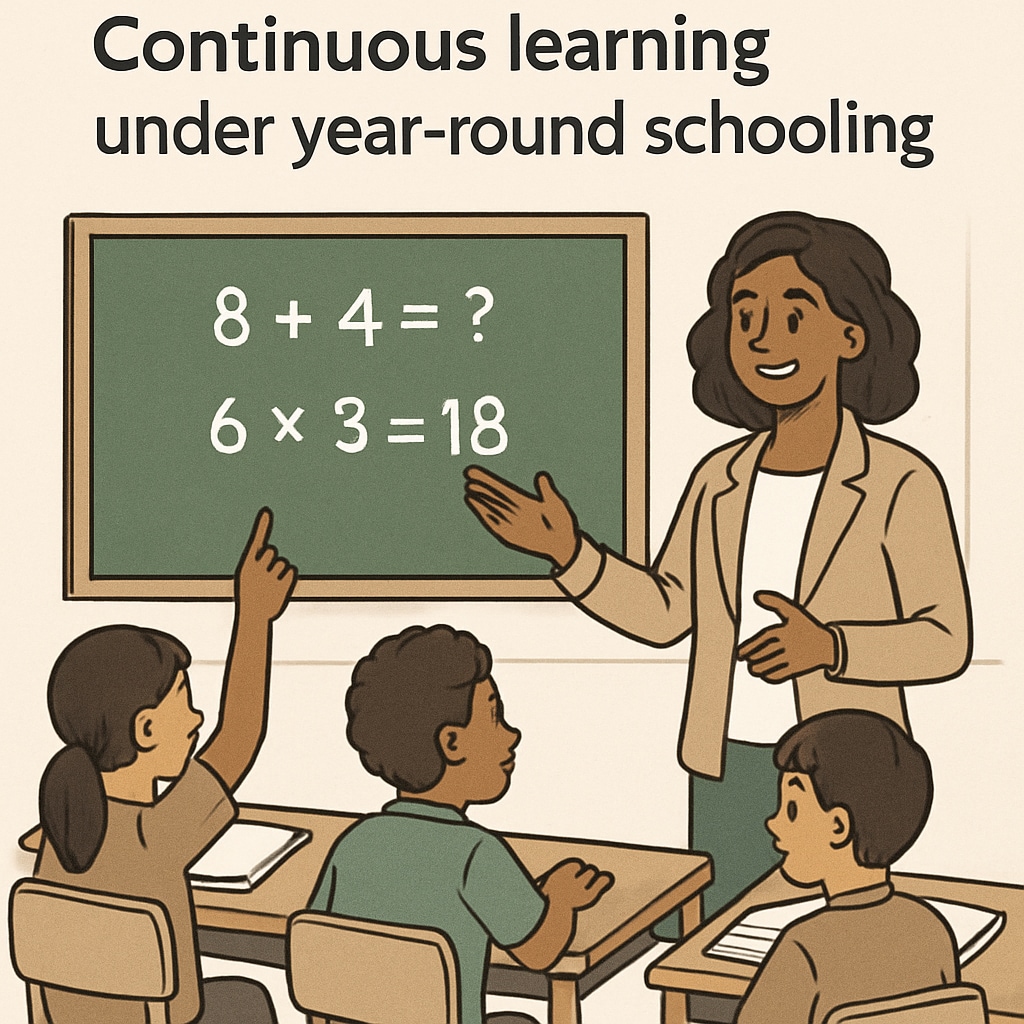Year-round schooling, summer break alternatives, and knowledge retention are increasingly relevant topics in modern education reform. This innovative model, which replaces traditional long summer vacations with a balanced cycle of shorter breaks, offers a promising solution to the widespread issue of “summer slide”—the loss of knowledge during extended breaks. By restructuring the academic calendar, year-round schooling not only enhances learning outcomes but also promotes a more sustainable pace for both students and educators.
The Problem of “Summer Slide”
One of the most significant challenges in traditional K-12 education is the “summer slide,” a term used to describe the decline in academic skills and knowledge that occurs during long summer vacations. Research has shown that students, particularly those in lower-income communities, lose months of progress in subjects like math and reading during these extended breaks (Summer Learning Loss on Wikipedia). As a result, teachers often need to dedicate weeks at the beginning of a new school year to review previous material instead of advancing the curriculum.

Year-Round Schooling as an Alternative
Year-round schooling offers a practical solution to this problem by redistributing school days throughout the year. Instead of the traditional calendar with a long summer break, students attend classes for several weeks followed by shorter, more frequent breaks. For example, the 45-15 model involves 45 days of instruction followed by 15 days off. This approach keeps academic engagement consistent and minimizes the extended periods away from school that contribute to knowledge loss.
Key benefits of year-round schooling include:
- Improved knowledge retention through continuous learning cycles.
- A more balanced schedule that reduces burnout for both students and teachers.
- Opportunities for intersession programs to provide additional educational support.

Enhancing Knowledge Retention and Equity
In addition to addressing “summer slide,” year-round schooling fosters equity by offering consistent learning opportunities for all students. Lower-income families often lack access to summer enrichment programs, which exacerbates learning disparities. By eliminating the extended summer break, this model ensures that every student remains engaged in structured learning throughout the year (Educational Equity on Britannica). Furthermore, shorter breaks are less likely to disrupt students’ academic routines, allowing them to retain information more effectively.
While the year-round schooling model may require adjustments to family schedules and community resources, its long-term benefits for knowledge retention and educational equity make it a compelling option for schools across the globe.
Conclusion: A Sustainable Learning Solution
Year-round schooling, summer break alternatives, and knowledge retention are interconnected concepts that can reshape the future of education. By addressing the inefficiencies of traditional academic calendars and prioritizing continuous learning, this innovative model paves the way for more equitable and effective educational experiences. As schools and policymakers explore new ways to support students, year-round schooling stands out as a sustainable solution to enhance knowledge retention and academic performance.
Readability guidance: This article uses concise paragraphs, includes lists to summarize key points, and maintains a balance of active voice with clear transitions. Images are strategically placed to complement the content, illustrating classroom scenarios under year-round schooling.


